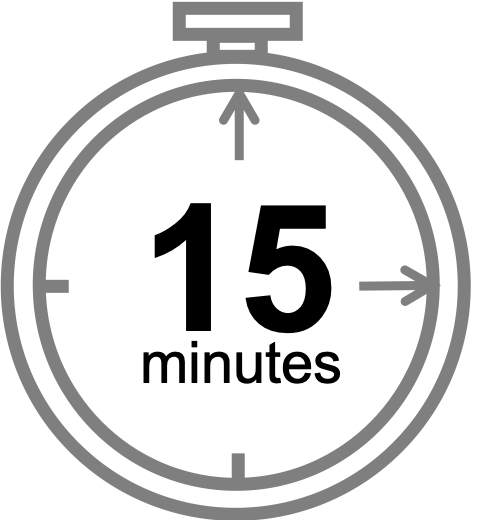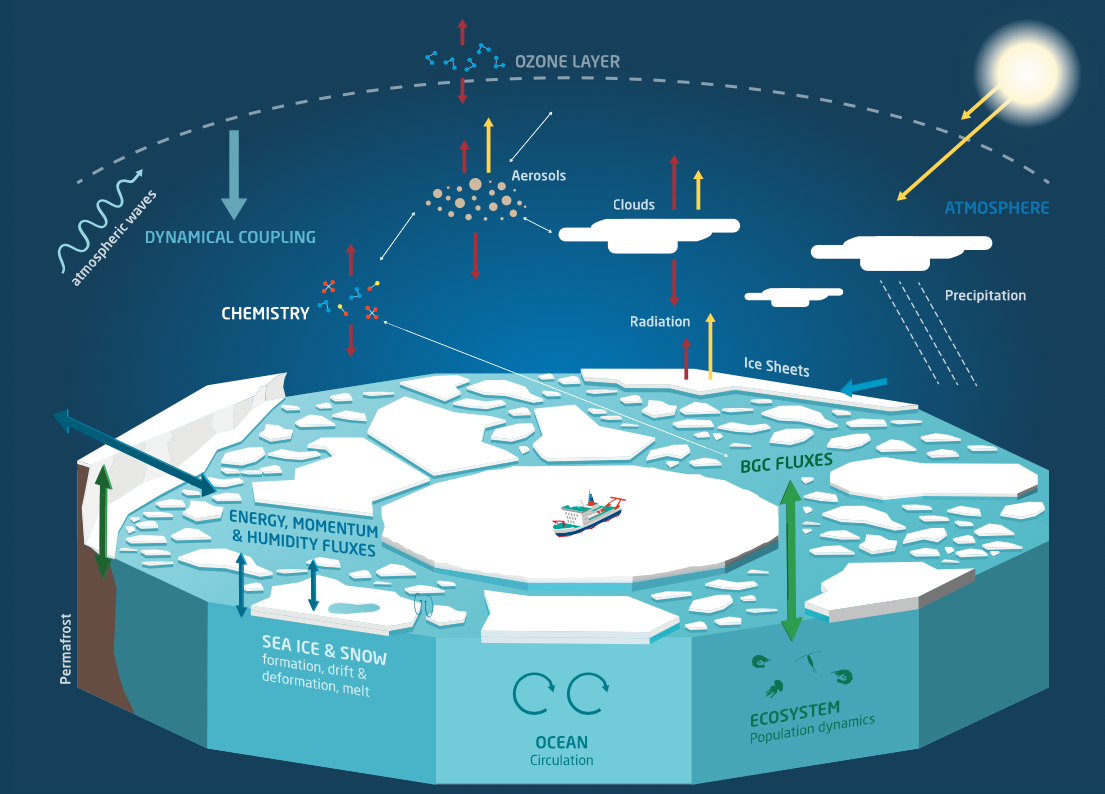 Quick Bite: Climate is a System
Quick Bite: Climate is a System
Changes in albedo due to changes in sea ice is just one component of the complex Arctic and global climate systems. Atmospheric processes, clouds, ocean currents, and several other things play a role in these systems. During the 2019-2020 MOSAiC expedition, participants were put into research teams that studied different components of the Arctic climate system. Figure credit: AWI
Teachers, divide your students up into 5 groups. Each group will represent one of the MOSAiC expedition science teams: Team Sea Ice, Team Atmosphere, Team Ocean, Team Biogeochemistry, Team Ecosystems. Have each group read about their MOSAiC science focus area (links below). Then, clear a space in your classroom and have the teams stand in a circle. One team will start with a ball of yarn, and they will say one thing about what they are studying and why. If there is a connection between what they are studying and another team, then they will pass the ball of yarn to that team and cut the yarn so that the two teams are linked by the yarn. For example, Team Ecosystems could say that they are studying how melting sea ice could impact microbes that live under the ice. They would then connect themselves to Team Sea Ice via a strand of yarn. Continue around the circle a few more rounds. What do you notice? Are/how are the various teams connected? Do components of the Arctic climate system act in isolation from one another? Why or why not?
Figure credit: AWI
Team Atmosphere Reading Team Sea Ice Reading Team Ocean Reading Team Biogeochemistry Reading Team Ecosystems Reading
